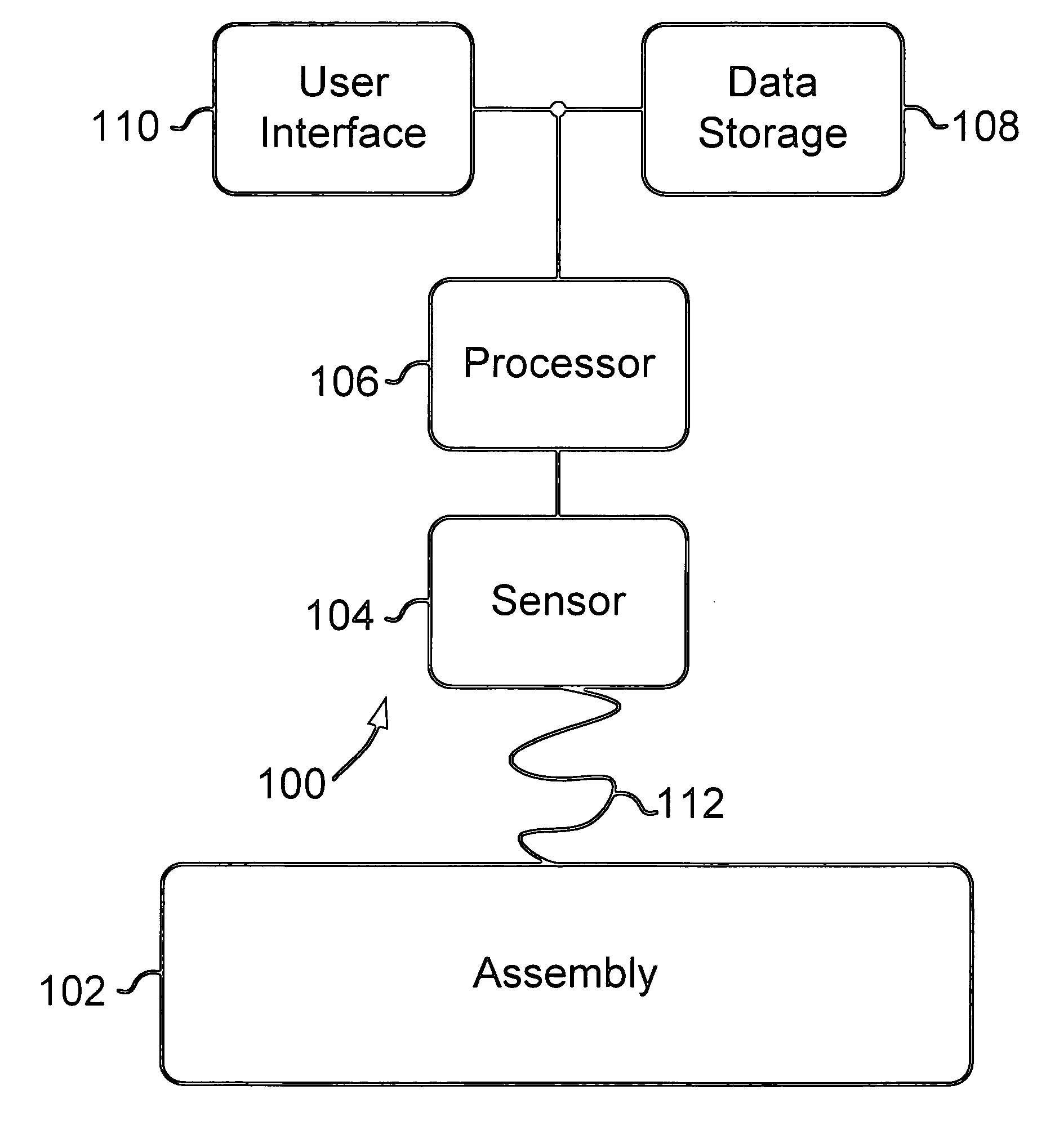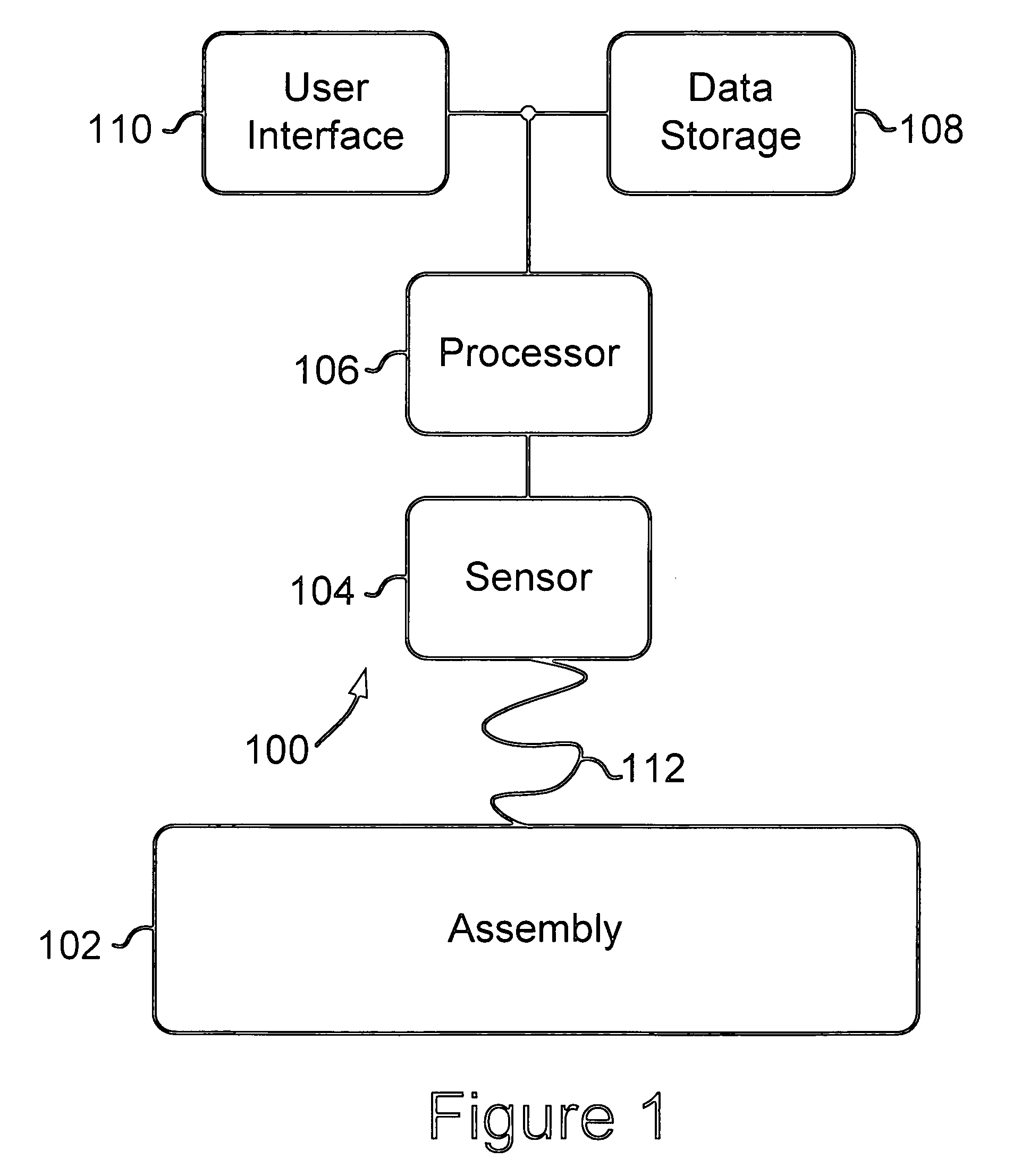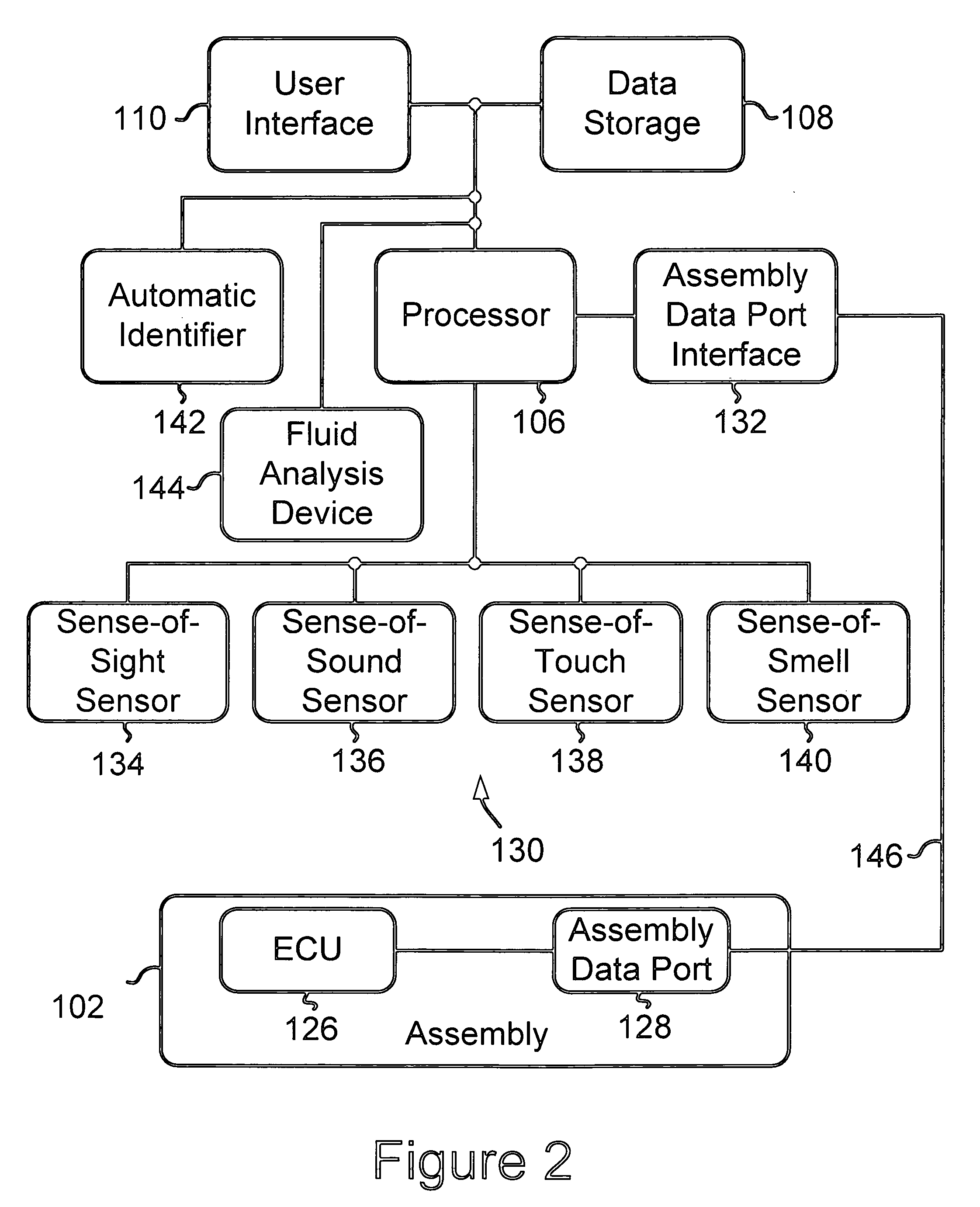System and method of using sensors to emulate human senses for diagnosing an assembly
a technology of sensors and human senses, applied in the field of assembly diagnosis, can solve the problems of assembly malfunction, assembly may malfunction, assembly may malfunction, etc., and achieve the effect of facilitating assembly diagnosis and informed diagnosis of assembly
- Summary
- Abstract
- Description
- Claims
- Application Information
AI Technical Summary
Benefits of technology
Problems solved by technology
Method used
Image
Examples
Embodiment Construction
1. Example of a System with One Sensor for Assembly Diagnosis
[0020]FIG. 1 is a simplified block diagram of an example of a system for diagnosing an assembly. It should be understood that this and other arrangements described herein are set forth only as examples. Those skilled in the art will appreciate that other arrangements and elements (e.g., machines, interfaces, functions, orders, and groupings of functions, etc.) can be used instead, and some elements may be omitted altogether. Further, many of the elements described herein are functional entities that may be implemented as discrete or distributed components or in conjunction with other components, and in any suitable combination and location. Various functions described herein as being performed by one or more entities may be carried out by hardware, firmware, and / or software. Various functions may be carried out by a processor executing instructions stored in data storage.
[0021] As shown in FIG. 1, a system 100 for diagn...
PUM
 Login to View More
Login to View More Abstract
Description
Claims
Application Information
 Login to View More
Login to View More - R&D
- Intellectual Property
- Life Sciences
- Materials
- Tech Scout
- Unparalleled Data Quality
- Higher Quality Content
- 60% Fewer Hallucinations
Browse by: Latest US Patents, China's latest patents, Technical Efficacy Thesaurus, Application Domain, Technology Topic, Popular Technical Reports.
© 2025 PatSnap. All rights reserved.Legal|Privacy policy|Modern Slavery Act Transparency Statement|Sitemap|About US| Contact US: help@patsnap.com



